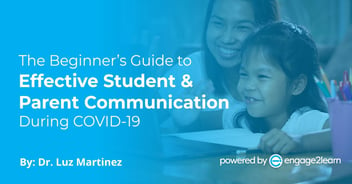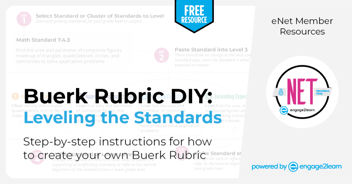Modernizing Continuous Performance Management | engage2learn
Organizations spend a fortune purchasing performance management tools that often fail to meet their unique needs. At engage2learn (e2L), we set out to develop a fully customized performance management system that leveraged existing technology adoptions. The result was an agile system that supports continuous performance management with no added expense to the company. In this article, I will share the details and tools that worked for us.
Essential Requirements
Every organization is different, and critical performance management components will vary depending on the industry, workforce, and company culture. At e2L, we had five requirements to work with as we were designing our performance management process.
- We knew the process had to be continuous. Along with numerous other organizations (Adobe, Microsoft, IBM, Deloitte), our team decided early on that the outdated annual performance review system would not work. In order for the system to add value, it had to be continuous.
- Another aspect of traditional performance management to be avoided was traditional performance ratings where supervisors assign a rating at the end of the year. Based on our own experience and also on extensive research, the time-honored but widely despised annual performance ratings were not going to work for us. The elimination of performance ratings would result in a challenge…how to manage pay for performance. More on this later.
- At e2L, our culture is the centerpiece of who we are. The e2L Cultural Tenets permeate our work beginning with recruitment and onboarding and extending to every step of the employee life-cycle. For this reason, the e2L Cultural Tenets had to be included in the performance management process.
- Our team is goal-oriented. We monitor goal attainment at the corporate, team, and individual levels. It would be imperative to weave goal attainment that aligns with company goals into the process.
- Experience had taught us that purchased appraisal tools rarely meet all of an organization’s needs. Although they allow for some level of customization, it is often difficult to mold existing platforms to organizational requirements. For that reason, our goal was to develop a system that depended on technology that we had already purchased and molding it to fit our performance management needs.
Components
Our workforce can be categorized into two different subsets. Our coaching team travels frequently, as they provide coaching and training for teachers and district leaders across Texas and beyond. Coaches account for about 50 percent of our employees. Everyone else is considered operations (ops). Two separate timelines were established for coaches and ops. For us, it made sense to set up a process that mirrors school or academic years. For that reason, our timeline runs from June 1st to May 31st of the following year.
e2L Coach Performance Management Components
- eGROWE conversations are virtual coaching conversations and take place multiple times throughout the year.
- Video calibrations take place several times per year with additional opportunities for first-year coaches.
- Partner PLCs (professional learning communities) are partner-based team meetings and take place on a monthly basis.
- Professional learning plans are developed in the summer and updated throughout the year.
A high-level overview of the e2L Coach CPM (Continuous Performance Management) process is available.
e2L Ops Performance Management Components
- eGROWE conversations are virtual coaching conversations and take place quarterly.
- Check-Ins take place eight times per year. This is a quick process that does not require a virtual meeting.
- PLCs (professional learning communities) are team meetings and take place on a monthly basis.
- Weekly one-on-ones between the employee and their coach.
A high-level overview of the e2L Ops CPM (Continuous Performance Management) process is available.
Technology
We decided on two technology applications to meet e2L CPM needs. Both were existing adoptions which served two purposes; no added cost and no necessary technology rollout.
- G-Suite – e2L is a Google company. Everyone on the team is accustomed to working with Google Docs and Google Drive. All performance management platforms are based on a pre-designed appraisal form or document. We simply created our document in Google Docs. In this way, we were able to customize it to fit our exact needs. Furthermore, both the employee and their coach have the ability to access the document and enter comments and feedback. A sample of the Ops CPM form is available for review.
- Wrike Project Management – As a virtual company, we rely heavily on Wrike, our project management system. We created a Wrike project for each individual’s annual process. Managing the process in Wrike helped to give every team member a clear picture of the annual process, provided deadlines, and also allows for automatic reminders depending on upcoming deadlines. Additionally, it allows the HR team to monitor completion throughout the year. These are features of traditional performance management platforms and were easily accomplished with Wrike. A sample Ops CPM Wrike Project is available.
Process
As mentioned above, we developed a continuous performance management process that would allow for monthly check-ins and quarterly conversations. The continuous nature of the process ensures that there is ample opportunity to talk about the work to be done, request support, and provide feedback.
Quarterly conversations are based on the e2L eGROWE© Coaching Model. This is the same model that we have used with thousands of educators across the country to great success! Our team members know that they will need to be prepared for their eGROWE conversations with evidence of goal attainment.
In addition to these monthly events, our process also includes:
- Brief one-one-ones – These are typically via phone and 20-30 minutes in duration. The purpose of these calls is to allow the team member to bring up any questions or concerns that could potentially prevent work from moving forward.
- Monthly Professional Learning Communities (PLCs) – These are team meetings.
Goal attainment is a critical component. We monitor goals at every level. Due to the fact that we manage all of our work in Wrike, we developed a system of monitoring goal attainment and project effectiveness within Wrike. We leveraged the flexibility of Wrike’s custom fields and also their extensive reporting options to merge these requirements into this outstanding project management tool. One huge benefit is that our team is handling both project management and performance management in one place. If we had purchased a separate performance management system, there would be some duplication of effort.
At the beginning of this article, I mentioned the challenge of removing traditional performance ratings. Without ratings, performance-based pay gets a bit tricky. The same Wrike custom fields mentioned above also allow for each employee to self-assess critical tasks, and the system automatically captures timeliness in meeting deadlines. Management of this process in Wrike, on the back-end (by the HR team), is very detailed, so we won’t go further into that topic at this time. However, all of this information will be shared in the next blog update.
In addition to cost savings, another benefit of this locally developed system is agility. In traditional performance management systems, once the appraisal documents are launched, they can’t be changed. In other words, if the team identifies a critical improvement to the document or process, it would have to wait until the next appraisal cycle. By managing the process in Google and Wrike, we maintain the ability to make updates as needed throughout the appraisal cycle.
On the flip side, the documents and Wrike projects are individually created by the HR team. Once the design is complete, it’s just a matter of copying the templates, but it still requires about a full day for an HR team member to prepare everything at the beginning of the appraisal year. Nevertheless, the time invested is worthwhile and completely manageable for up to about 100 employees. Beyond that, it would likely be time to purchase a commercially available HR system. When we reach that point, we will have a solid knowledge of our performance evaluation needs and be ready to make an informed investment.
How will you update your performance management process in 2020?
The new year is right around the corner, so now is the perfect time to think about improvements to your process. Consider the following:
- Make a list of criteria that are essential for the unique needs of your organization.
- What aspects of your performance management process have worked well, and what steps would benefit from a change?
- Are there any timing aspects to your organization’s flow that should be captured in the performance management timeline? For example, our work aligns with the public school calendar, so our performance management schedule does too. Remember that the system doesn’t have to revolve around the calendar year.
- What technology does your organization utilize that could be leveraged?
Taking the time to think through potential improvements now will yield huge returns later in the year.



